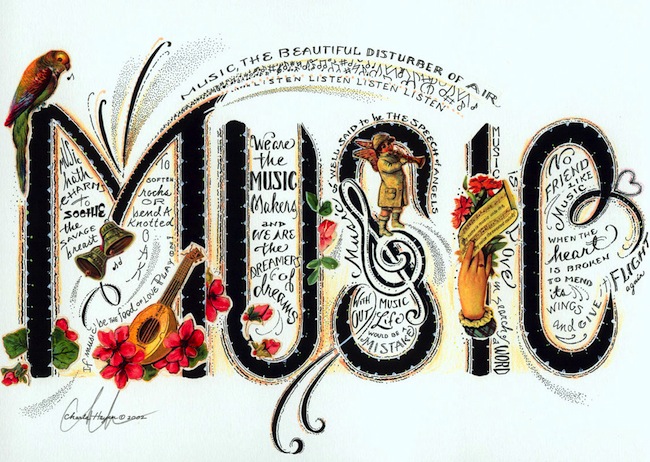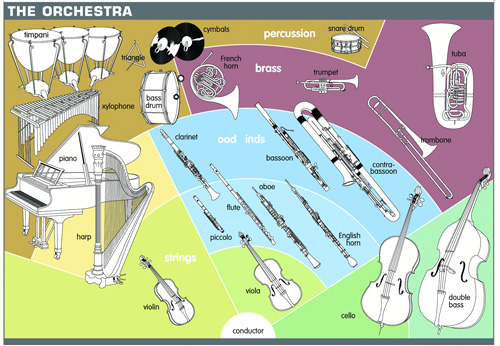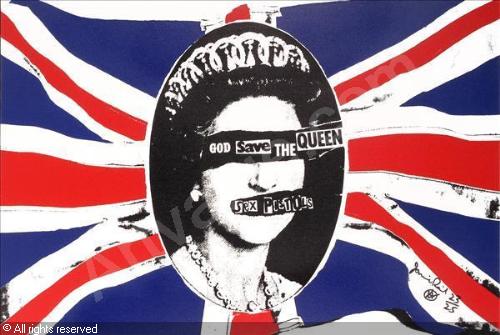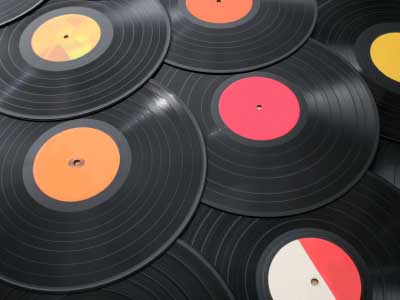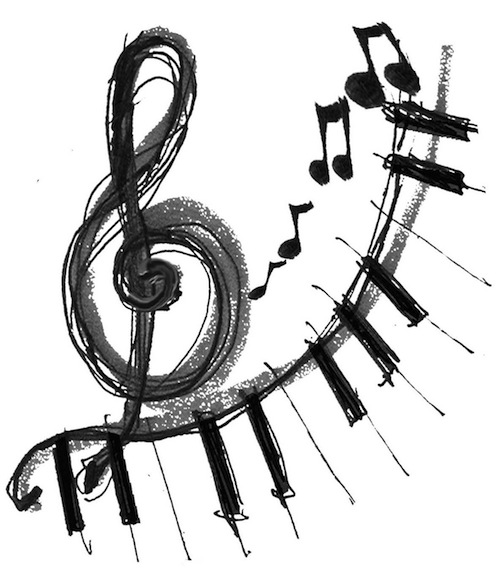Western music draws on numerous instruments from several instrument families that create sound indifferent ways. Instruments are often organized into set ensembles or groups that perform together. The diagram below shows some common instruments, as well as their typical placement in the orchestra.
Stringed instruments produce sound when the musician causes strings to vibrate by bowing or plucking them.
- Violin: A four-stringed instrument in the soprano register, played primarily with a bow. The violin is a staple of the orchestra and other ensembles, but its expressive range also makes it a versatile solo instrument.
- Viola: A four-stringed instrument in the alto register, slightly larger than a violin, played primarily with a bow. The viola is used primarily for its strong support in the mid-range and does not yet have its own extensive solo repertoire.
- Cello (violoncello): A four-stringed instrument in the tenor bass register, played primarily with a bow. The cello is a staple member of the Western orchestra and also a common solo and concerto instrument.
- Double bass (contrabass): The largest and lowest-registered string instrument in the orchestra. The double bass is only rarely used as a solo or concerto instrument.
- Harp: A string instrument of ancient origins. The harp typically has 47 strings and is played by plucking individual strings or groups of strings with the fingers
- Many other string instruments, including the mandolin, guitar, balalaika, and banjo, may be used in the orchestra.
Woodwind instruments produce sound when the musician’s breath causes air to pass against an edge or a vibrating reed. The term “woodwind” originated at a time when all the instruments in this group were made of wood. The practice persists despite the fact that many are now made of metal.
- Flute: A wind instrument in the soprano register played by blowing across a hole in the mouthpiece. The flute is versatile as a solo instrument or member of the orchestra.
- Piccolo: A small wind instrument registered one octave above the flute.
- Oboe: A double-reed instrument with a flared bell. The oboe, which is in the soprano register, has a distinctive tone and expressive quality that has made it a staple of the Western orchestra since the 18th century.
- English horn: A double-reed instrument in the alto register, similar to an oboe, with a pear-shaped bell.
- Clarinet: A single-reed instrument, typically made of wood, with a flared bell. The clarinet family includes a number of instruments, among them the E (soprano) clarinet, the basset horn, the bass (B) clarinet, and the contrabass clarinet.
- Bassoon: A double-reed instrument in the tenor-bass register. Composers have used the bassoon’s rich tone to add color to orchestral works since the late Baroque era.
- Contrabassoon: A double-reed instrument in the bass register, pitched an octave below the bassoon.
- Saxophone: A single-reed instrument made of metal, with a mouthpiece similar to a clarinet’s. The saxophone family includes thetenor, alto, soprano, and baritone saxophones and is used far more widely in jazz than in concert music.
Brass instruments produce sound when the musician’s lips vibrate against a mouthpiece.
- French horn: A circular horn with a wide flared bell and three valves that are used to manipulate pitch. The French horn is a descendant of ancient hunting horns.
- Trumpet: A brass instrument with three valves that control pitch. The trumpet has a bright sound, but, as with other brass instruments, the musician can alter tone quality with a mute.
- Trombone: A brass instrument with a slide that manipulates pitch by changing the length of the trombone’s tubing. Varieties include thetenor, alto, and bass trombones.
- Tuba: The largest, lowest-pitched orchestral brass instrument. The tuba has a wide, flared bell and three or four valves.
Percussion instruments produce sound when the musician strikes, scrapes, or shakes them.
- Timpani (kettledrum): A drum with a bowl-shaped copper or brass shell. The timpanist can alter the pitch of the instrument using a pedal that controls the tension of the drum head.
- Bass drum: The largest and lowest-pitched orchestral drum. Typically struck with a padded drumstick, the bass drum is used mainly for rhythmic accompaniment.
- Snare drum: A small, cylindrical drum with a band of wires, or snares, stretched across the drum’s bottom head. The snare drum makes a sharp, penetrating sound.
- Cymbals: Circular metal discs, flat or slightly concave, that can be struck with sticks or mallets, brushed, or crashed together, producing a variety of sounds.
- Gong: A large metal plate, suspended from a frame, that is struck with a padded mallet.
- Xylophone: A set of flat bars of different sizes, typically made of wood, set in a frame. The individual bars produce specific pitches when struck with mallets.
- Triangle: A steel rod bent into a triangle. When struck with a metal bar, it produces a sharp, piercing ring.
- Many other instruments and everyday objects may appear in an orchestra’s percussion section. Common ones include thetambourine, tom-toms, tenor drum, bongos, conga, hi-hat, tam-tam, glockenspiel, marimba, crotales, claves, scraper, castanets, maracas, ratchet, whip, and sleigh bells.
Keyboard instruments produce sound in a variety of ways that the musician brings about indirectly via a keyboard.
- Piano: An instrument in which the keys (typically 88) cause felt hammers to strike metal strings inside the instrument. The piano evolved from the harpsichord to become one of the most versatile instruments in Western music and a staple in solo works and concertos. It has a vast dynamic and expressive range and a pitch range of nearly eight octaves.
- Harpsichord: An instrument in which the keys cause strings inside the instrument to be plucked. The harpsichord was important in the Baroque era but faded in popularity with the emergence of the piano, which has a greater dynamic and expressive range.
- Organ: An instrument in which the keys and foot pedals cause air to be released into pipes of various sizes. A complex, often massive instrument, the pipe organ was popular among Baroque composers, especially Bach.
- Celesta: An instrument in which the keys cause felt hammers to strike metal bars. The celesta produces a chiming, bell-like sound that is used for a variety of effects.
- Duet: A group of two musicians.
- Trio: A group of three musicians.
- Quartet: A group of four musicians.
- String quartet: A standard chamber-music ensemble composed of two violins, one viola, and one cello.
- Quintet: A group of five musicians.
- Sextet: A group of six musicians.
- Septet: A group of seven musicians.
- Octet: A group of eight musicians.
Large Ensembles
- Orchestra (symphony orchestra): An ensemble of string, wind, brass, and percussion instruments, typically composed of about 100 musicians total. An orchestra may be purely instrumental or may be accompanied by a chorus.
- Chamber orchestra: A smaller orchestra, typically composed of 40 or fewer musicians.
Credit: sparknotes

